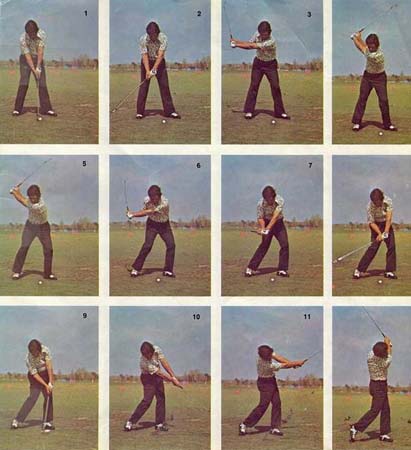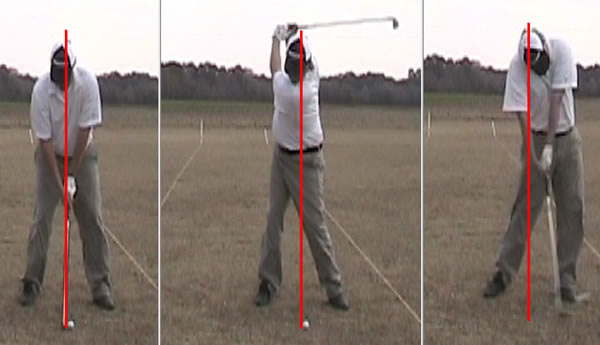
2-L (Application of Force)
Very simple, Homer goes over the 3 forms of levers here. He then puts a diagram of each lever athte bottom of page 36. Of the 3 levers, only 'Form #3' is used in the golf stroke. Go to Section 6-A-2 and you will see how the Form #3 applies in the golf swing. The primary lever assembly in the golf swing is the relation of the left arm and clubshaft. The fulcrum in this case is the left shoulder, the weight isthe clubhead. And the clubshaft and the lag created is the force.
2-M-1 Basic Power
Homer states that the formula for clubhead power is 1/2 the mass of the clubhead * the velocity of the clubhead squared.
Clubhead velocity is developed by the thrust of the hands and the right arm which is an acceleration force.
Thrust may be muscular thrust (the hitter actively thrusting the right arm) or centrifigul force (the swinger pulling with the left side and the pivot and the right arm 'coming along for the ride').
Homer gets into some other stuff that's not all that overly important, but he does state this:
Still, always sustain the Lag through Impact AS THOUGH the Clubshaft were throwing the Ball off the Clubface -- NO QUITTING.As we talked about in the 'Endless Belt Effect', the hand speed in the downswing should remain constant thru the release. So if they are moving at 50 mph (a random number) at the start of the downswing, they should be moving at 50 mph in the release. With 'quitting' the hands slow down and almost come to a half.
Here's a pic of Lee Trevino, who is the antithesis of 'quitting.'

Look at pic frame #9. And see where Trevino's hands are. They are about opposite of his left leg.
Now, take a look at this sequence of a person who is 'quitting.'

Take a look at this golfer's hands at impact. The hands are by the right leg because the golfer's hands have stopped moving forward, aka he's 'quitting' thru the ball. As the hands quit, the clubhead has to get to the ball somehow so the wrists do the work and 'flip' to get the clubhead thru impact.
At the top of the swing think of your hands like a runner with the finish line outside of the left leg. Homer Kelley is saying that you keep lagging the club thru the finish line. So you want to think and feel that the hands are crossing the finish line first before the clubhead does.
2-M-2 (Power Regulation)
The #3 Pressure Point is the base joint of the right index finger. This is also known as the clubhead lag pressure point. Homer states that this point regulates power.
To vary the effective clubhead mass, vary:
1. Vary lag pressure
2. Vary the 'width' of your swing.
To vary the Clubhead speed, vary:
1. The length of your golf swing
2. Release Interval.
Homer then states that the golfer can use any one or any combination of the four alternatives.
3JACK
No comments:
Post a Comment